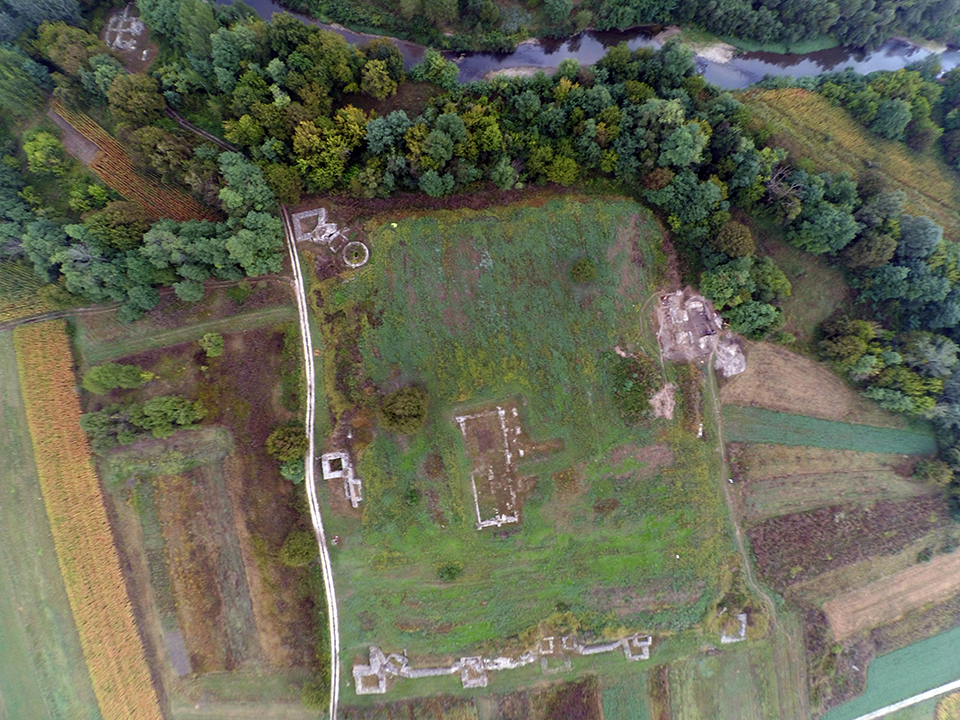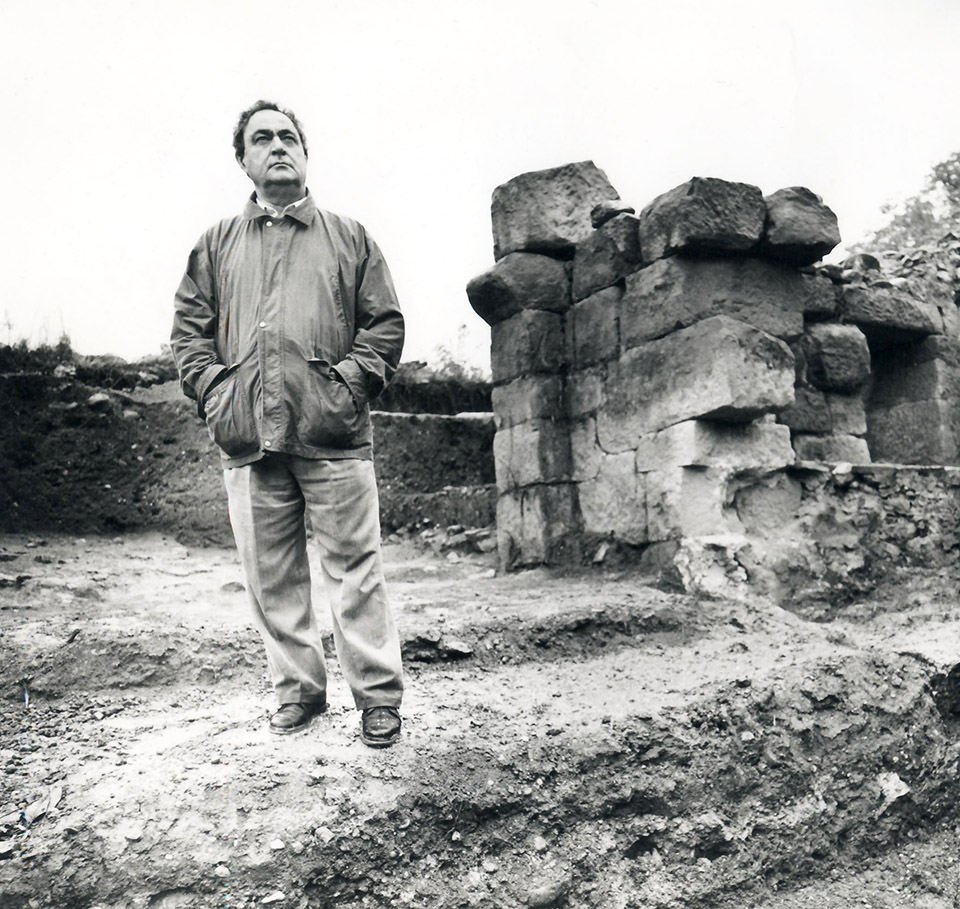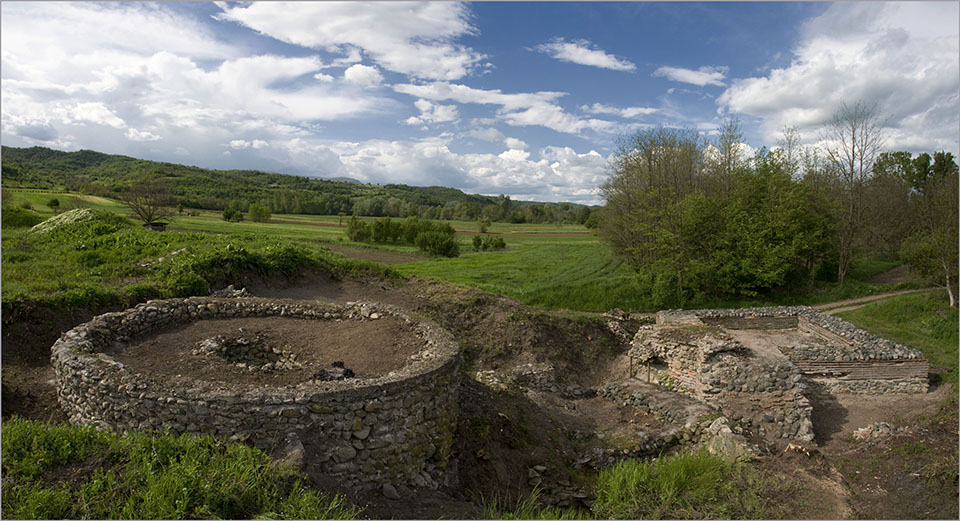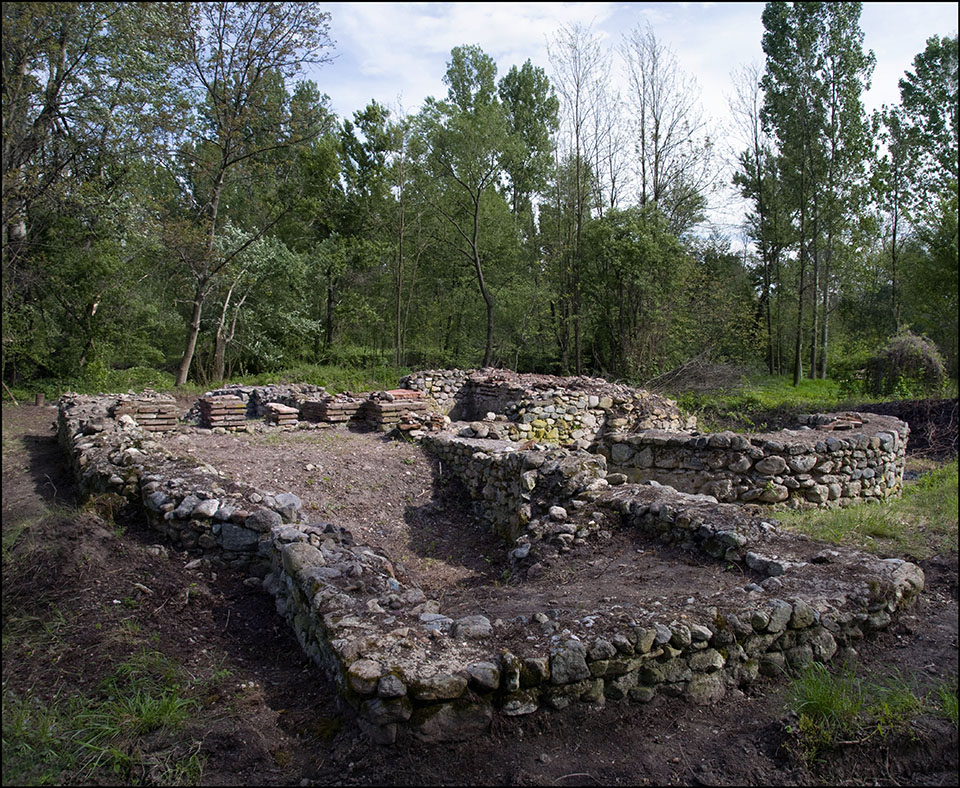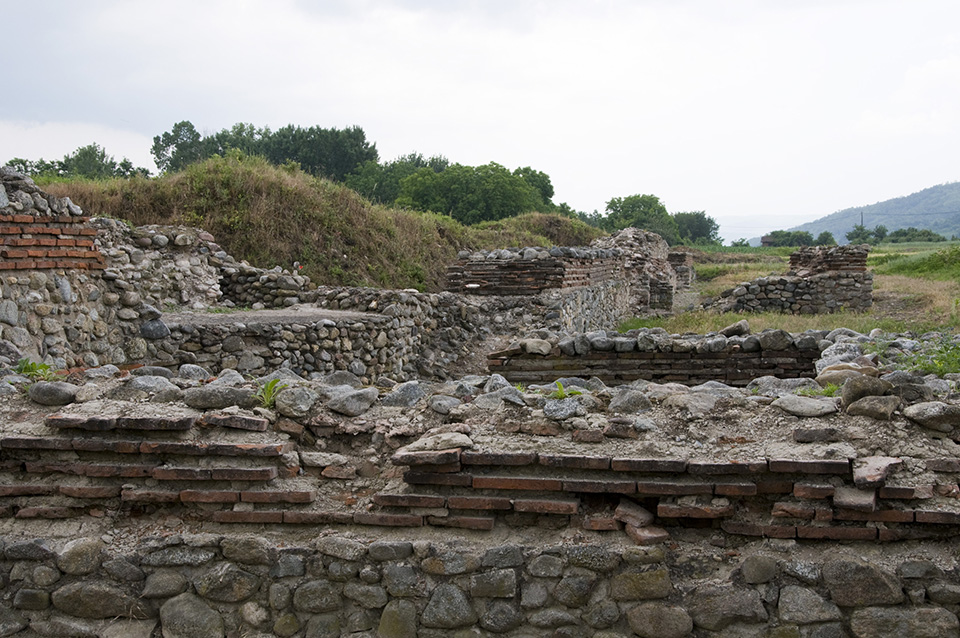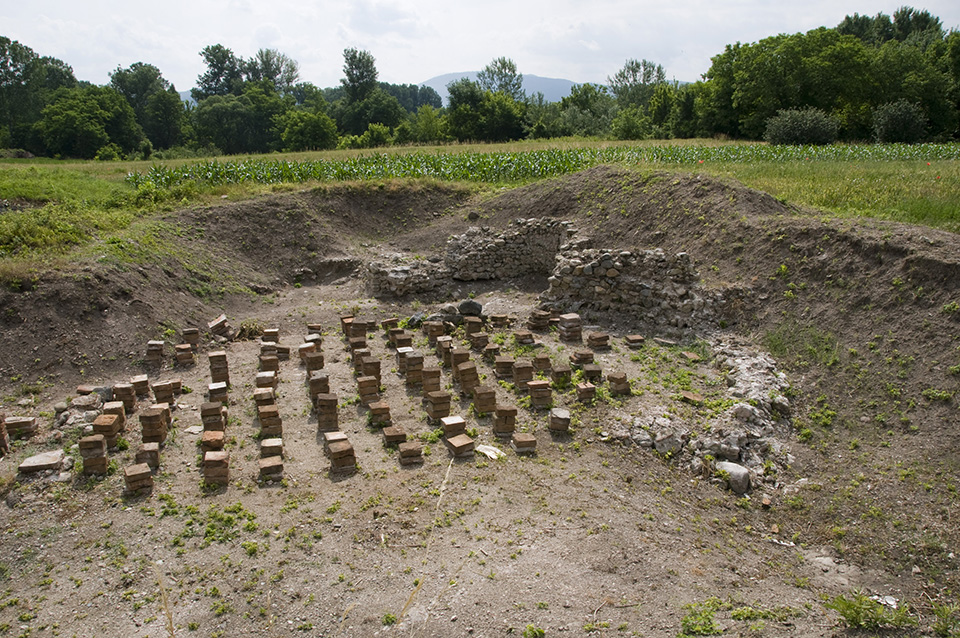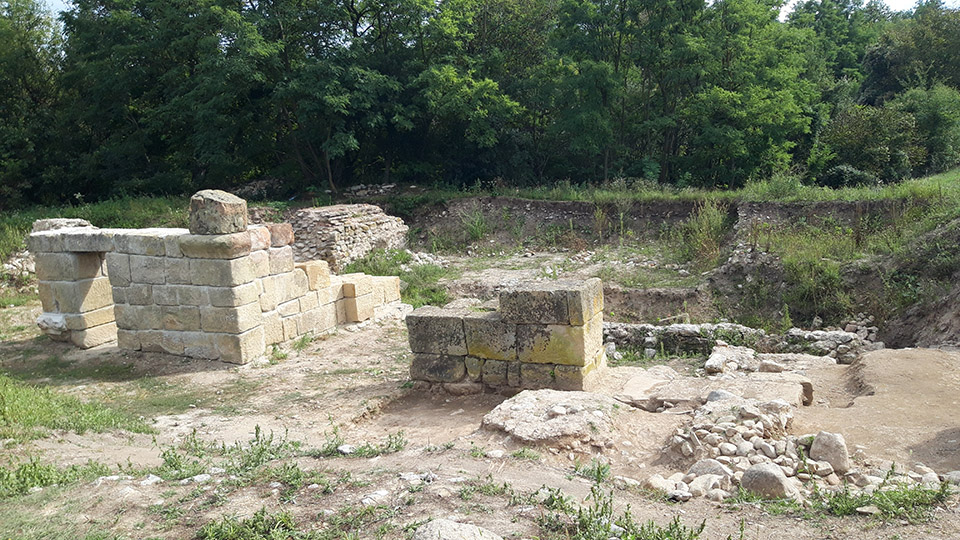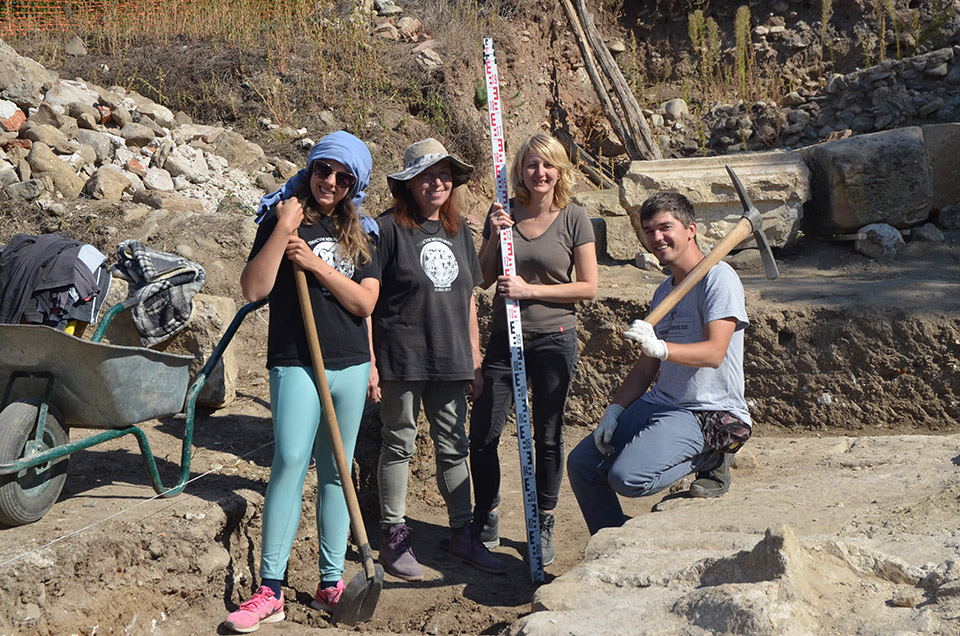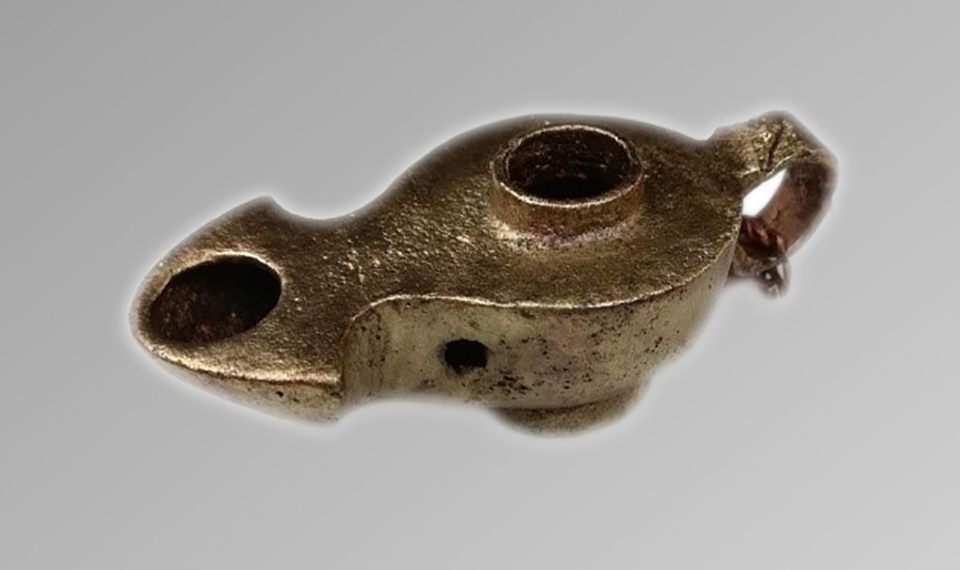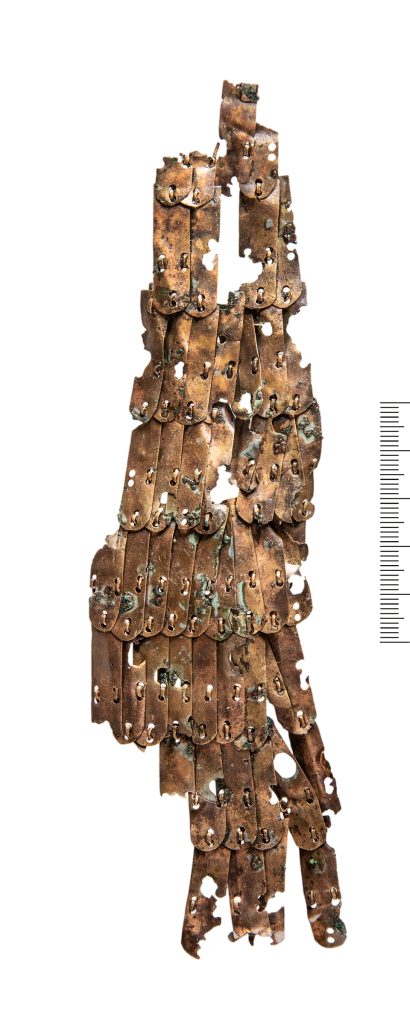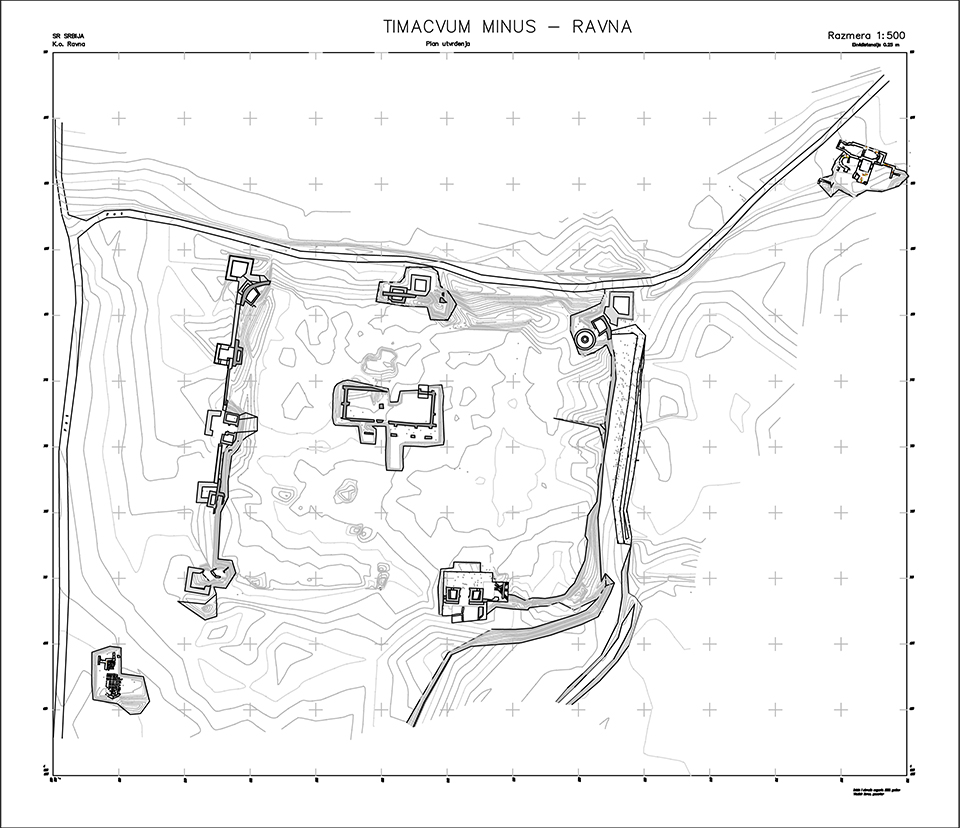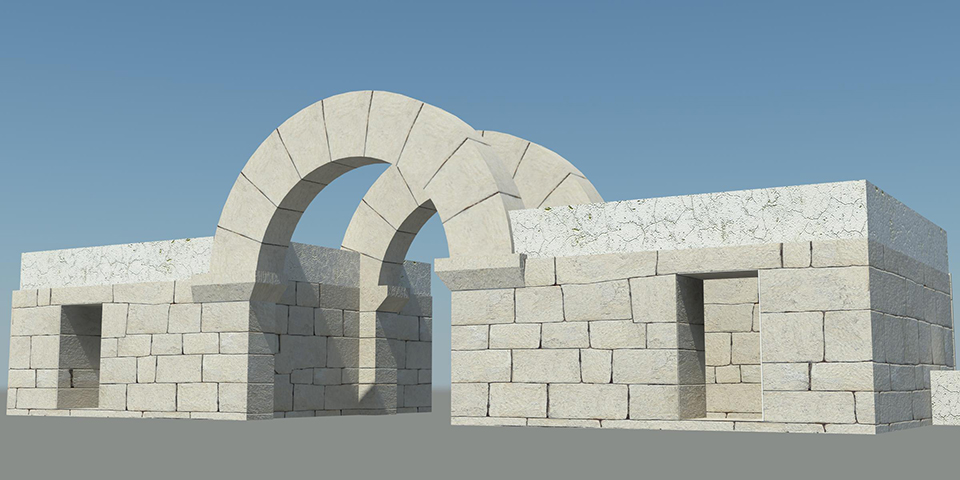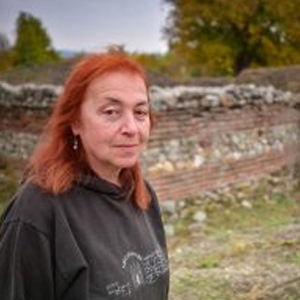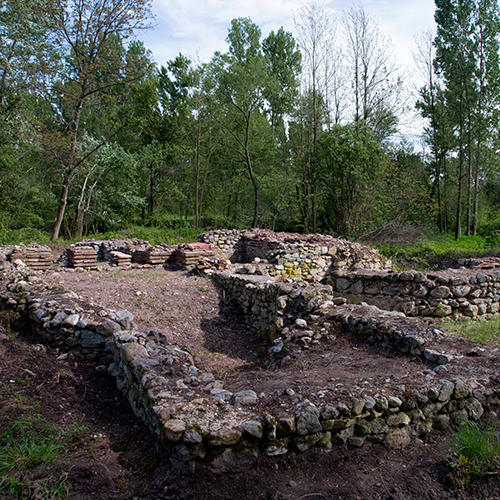
TIMACUM MINUS – RAVNA NEAR KNJAŽEVAC

Project Director: Dr Sofija Petković
Team :
Dr Igor Bjelić, Institute of Archaeology, Belgrade
MA Marija Jović, Institute of Archaeology, Belgrade
MA Bojana Ilijić, Homeland Museum, Knjaževac
MA Nikola Radinović- Belgrade
Co-operation:
Institute of Archaeology, Belgrade
Homeland Museum, Knjaževac
Institute for the Protection of Cultural Monuments, Niš
The Roman fortification of Timacum Minus was the administrative centre of the Roman mining area, and is dated from the mid-1st to the mid-5th century AD. The site is located on the left bank of the Beli Timok river, about 400 m east of the village of Ravna, which is 10 km northwest of Knjaževac, in eastern Serbia. The remains of a civilian settlement were identified by archaeological prospection and small-scale trial trenching in the area north and south of the fort. Northeast of the fort, Roman baths were explored, while in the southwest a large building with a hypocaust heating system was partially excavated. Based on the finds of alters and the remains of a stone sculpture it is assumed that the shrines of Jupiter Dolichenus, Diana, Mars and Mithras existed in the civilian settlement. Archaeological prospection at the site of Timacum Minus determined the location of the Roman and mediaeval necropolis.
The Roman site of Timacum Minus is located on the left bank of the White Timok, about 400 m east of the village of Ravna, which is located 10 km northwest of Knjaževac, in eastern Serbia.
Since 1975, the Archaeological Institute in Belgrade, in cooperation with the Local Museum of Knjaževac, has continuously carried out systematic archaeological research of the Roman site of Timacum Minus. The Project Director from 1975 to 1996 was Dr Petar Petrović, who, together with his collaborators, published the preliminary results of archaeological research and epigraphic monuments from this locality.
Archaeological investigations of the Timacum Minus fortification over an area of about two hectares, at the site of Kuline, revealed the remains of the oldest earthen fortification with a palisade and wooden square towers in the sector of the north-western tower and, along the eastern rampart, a defensive trench – fossa, created in the middle of the 1st century AD. The company of this, the oldest fortification, was the cohors I Thracum Syriaca. Excavations in the sector of the western and southern gates, in the north-eastern, north-western and south-western corners of the fortification revealed the first stone fortification from the first half of the 2nd century. It had a rectangular base, with dimensions of 144 (east-west) x 112 m (north-south), rounded corners and internal square towers. The western and southern gates were about 3 m wide, flanked by two inner square towers each. The fortress had one such gate on all four ramparts. Between the corners and gates of the fortification, there were two inner square towers. From the formation of the stone castle until the late antique period, the company consisted of the cavalry cohors II Aurelia Dardanorum.
During the renovation of the fortifications, undertaken at the end of the 3rd century in this phase, the fortification retained the foundation from the previous period, and rectangular towers were built, which partially extend beyond the line of the restored rampart. During the first half of the 4th century, Timacum Minus was defended by 16 to 20 towers. The characteristic of this phase is that the towers and ramparts were built from blocks of grey sandstone and spoila from buildings from the previous period, among them tombstones from the nearby necropolis from the 2nd and 3rd centuries.
Archaeological research in the sector of the southern gate confirmed the restoration of the fortification from the middle of the 4th century. During the second half of the 4th century, the ramparts of Timacum Minus were rebuilt for the last time. Research revealed large projecting towers with a rectangular base, built in the opus mixtum technique. At this stage of the fort’s life, only the eastern gate was functional, and the fort had 15 to 17 large projecting towers, as well as a strong rampart with an average width of about 3 m. This fortification was destroyed in a fire at the beginning of the 5th century, as evidenced by the level of burning in the sector of the southern gate. In the last two decades of the 4th century, cohort II Aurelia Dardanorum was replaced by a cavalry detachment of pseudocomitatenses Timacenses auxiliarii, a unit that protected the entire area of Timoc.
In the sector of the southern gate, construction activities from the first half of the 5th century were also discovered. To the east of the gate, traces of archaeometallurgical activities were found in this phase. Life in the fortress was interrupted in the middle of the 5th century by massive destruction in a fire.
In the interior of the fortification, on the path of the decumanus (via principalis decumana), a large building with pilasters, most likely the principia, were partially explored. Based on archaeological finds, this building was dated to the 4th century, and it was in operation until the middle of the 5th century. In the first half of the 5th century, it was used as a warehouse – horreum. In the northeast corner of the fortification a circular building was discovered with a diameter of 6 m, most likely a cistern or pool for washing or separating ore. Metallurgical activities were confirmed in Timacum Minus from the second half of the 4th century in the sector of the southern gate.
The remains of the urban civilian settlement were ascertained by prospecting and smaller soundings in the area south of the fortification, where parts of two buildings, one from the 2nd to 3rd century and the other from the first half of the 4th century. Northeast of the castle, on the banks of the Timok, the thermal baths (thermae I) built in the 2nd century and abandoned at the end of the 4th century have been fully excavated. To the southwest of the fortification, a large building with a loose foundation, with two apses on the southern facade and with a hypocaust heating system, was partially explored, most likely a public bath (thermae II) or a luxury villa (villa urbana).
Based on the finds of altars, votive inscriptions and remains of stone sculptures, the existence of temples dedicated to Jupiter Dolichen, Diana and Mithras was confirmed in the civil settlement of Timacum Minus, while a smaller sanctuary dedicated to Mars was most likely located in the campsa.
During systematic research on this site, the location of Roman necropolises was generally established. A large number of discovered tombstones, built into the ramparts of the rebuilt fortifications testify to a large necropolis from the 2nd-3rd centuries. On the basis of geophysical prospecting, it was determined that it was a necropolis of cremated deceased, which extended to the west of the castle, along the road, at the site of Širina, which is bounded in the north by the bed of the Ropinski stream, in the south by the Selisk stream, and in the west by Slog Hill.
Protective archaeological excavations were carried out on the eastern slope of Slog Hill in 1994-1996 and 2013-2015, about 400 m west of the fortification. A multi-layered necropolis from Late Antiquity, in three phases (from the second half of the 4thto the first half of the 5th century) and early Middle Ages, in two phases (8th-9th century) was discovered here. A total of 233 graves were investigated. Until now, archaeological research has not revealed the remains of the medieval settlement, to which the necropolis on Slog Hill belongs.
In 1978 and 1994, four skeletal graves and two with cremation, which are part of a bi-ritual Roman necropolis from the end of the 3rd to the middle of the 4th century, were investigated at the Ropinski Potok site.
Petrović, P. Inscriptions de la Mésie Superieure III – 2.Timacum Minus et la Vallé du Timok, Beograd: Centre dʼétudest épigraphiques et numismtiques de la Faculté de philosophie de lʼUniversité de Beograd.
Petrović, P. Der Römische Bergbau in Ravna: Archӓologische Notizen, in: Ancient Mining and Metallurgy in Southeast Europe, eds. Petar Petrović and Slađana Đurđekanović, Archaeolgical Institute – Museum of Mining and Metallurgy, Belgrade – Bor 1995, 195-202.
Петровић, П. Римљани на Тимоку (Summary: Romans in the Timok Valley), у: Археологијам источне Србије/Archaeology of Eastern Serbia, ур. Мирослав Лазић, Центар за археолошка истраживања Филозофског факултета, Београд 1997: 115-131.
П. Петровић, С. Јовановић, Културно благо књажевачког краја. Археологија, Археолошки институт – Завичајни музеј Књажевац: Београд – Књажевац 1997;
S. Petković, M. Ružić, S. Jovanović, M. Vuksan, Zs. Zoffmann, Roman and Medieval Necropolis in Ravna near Knjaževac, Archaeological Institute, Monographs, Vol. 42: Beograd 2005.
S. Petković, The Traces of Roman Metallurgy in Eastern Serbia, Journal of Mining and Metallurgy 45 (2) B, Bor 2009, 187 -196.
B. Ilijić, Rimsko utvrđenje Timacum Minus, Knjaževac 2009.
С. Петковић, Б. Илијић, Прилог проучавању римског насеља на локалитету Timacum Minus код Књажевца, Гласник САД 28, Београд 2012, 153-178.
S. Petković, B. Ilijić, Votive Altar of Lucius Petronius Timachus, Starinar LXIII/2013, 53-72.
S. Petković, N. Miladinović-Radmilović, Military Graves from the Late Roman Necropolis at Slog in Ravna (Timacum Minus), Starinar LXIV/2014,87-130.
D. Živković, N. Štrbac, A. Mitovski, M. Sokić, S. Petković, V. Andrić, J. Lamut, B. Anđelić, B. Ilijić, Lj. Balanović, S. Budić-Bugarić, Preliminary aspects on characterization of metallurgical remains from archaeological site Ravna (Serbia), in: Proceedings, 46th International October Conference on Mining and Metallurgy, 1-4 October 2014, Bor Lake Serbia, Ed. N. Štrbac, D. Živković and S. Nestorović, Technical faculty in Bor, University of Belgrade and Mining and Metallurgy Institute Bor: Bor 2014, 192-195.
Б. Илијић, Timacum Minus – два света/Timacum Minus – Two Worlds, Завичајни музеј Књажевац, Књажевац 2015.
С. Петковић, Н. Миладиновић-Радмиловић, Н.Гавриловић-Витас, Б. Илијић, Погребни ритуал и култ Диониса у Равни (Timacum Minus)/Funeral Ritual and the Cult of Dionysus in Ravna (Timacum Minus), Археолошки институт, посебна издања, књига 57, Завичајни музеј Књажевац, Београд-Књажевац 2016.
S. Petković, D. Gojković, J. Bulatović, Early Medieval Burial of Woman and Foxat the Slog Necropolis in Ravna (Timacum Minus) in Eastern Serbia, Starinar LXX/2020, 239-256.
N. Miladinović-Radmilović, S. Petković, Health and Social Status of Children in the Late Roman Timacum Minus, in: Illyricum Romanum. Studiola in honorem Miloje Vasić, ed. Ivana Popović, Sofija Petković, Monographs no. 73, Institute of Archaeology, Belgrade 2020, 240-267.




